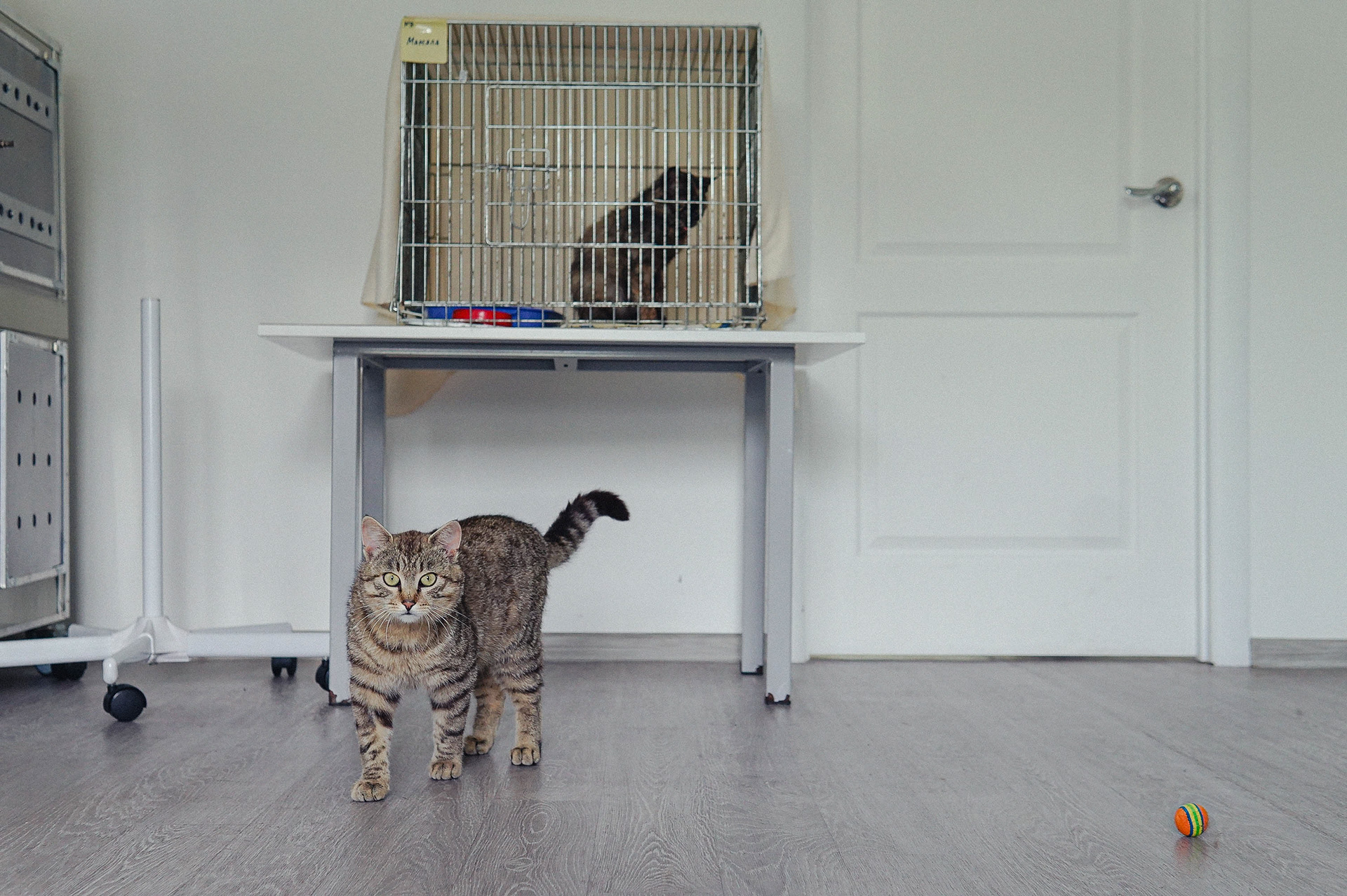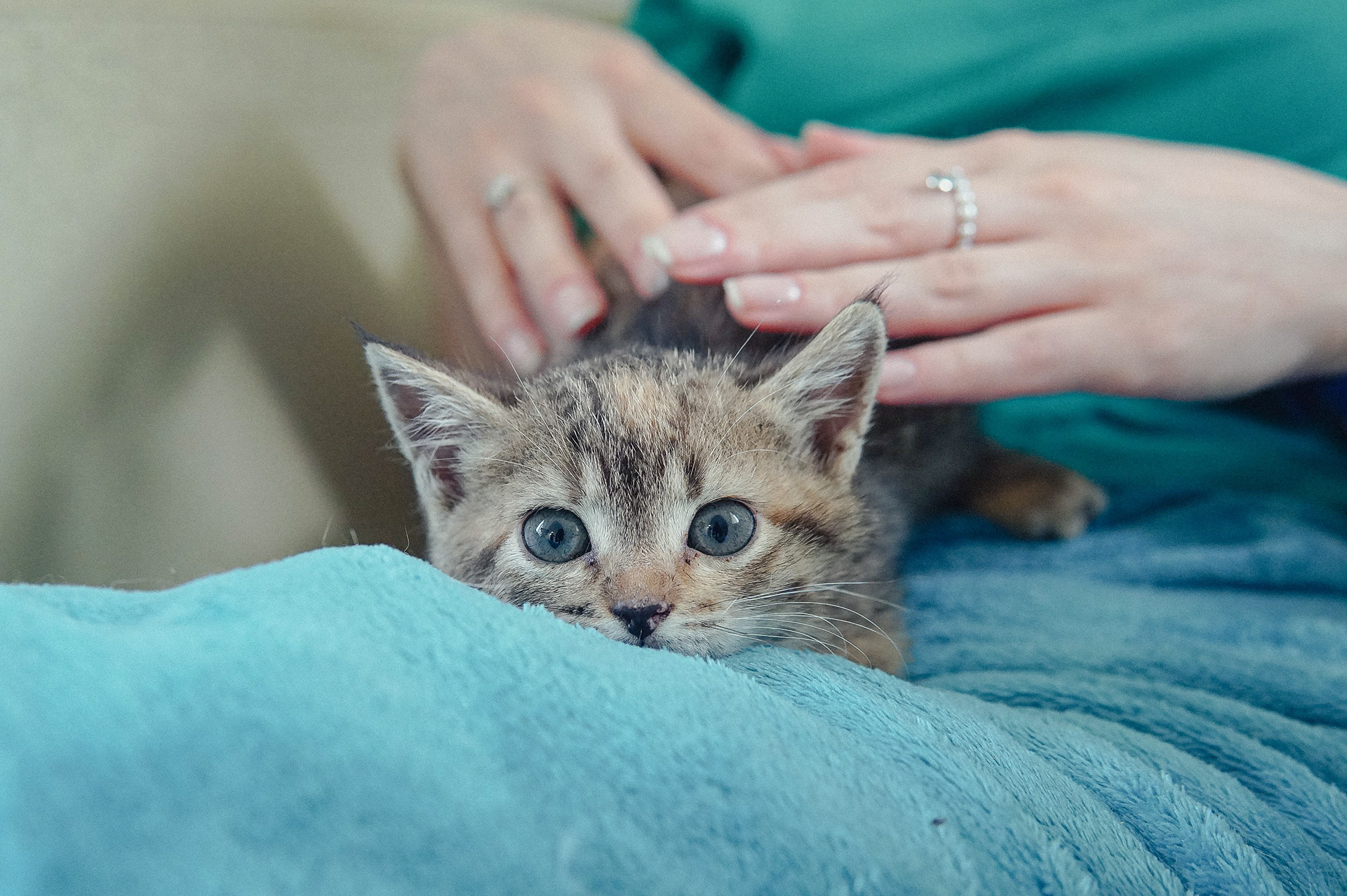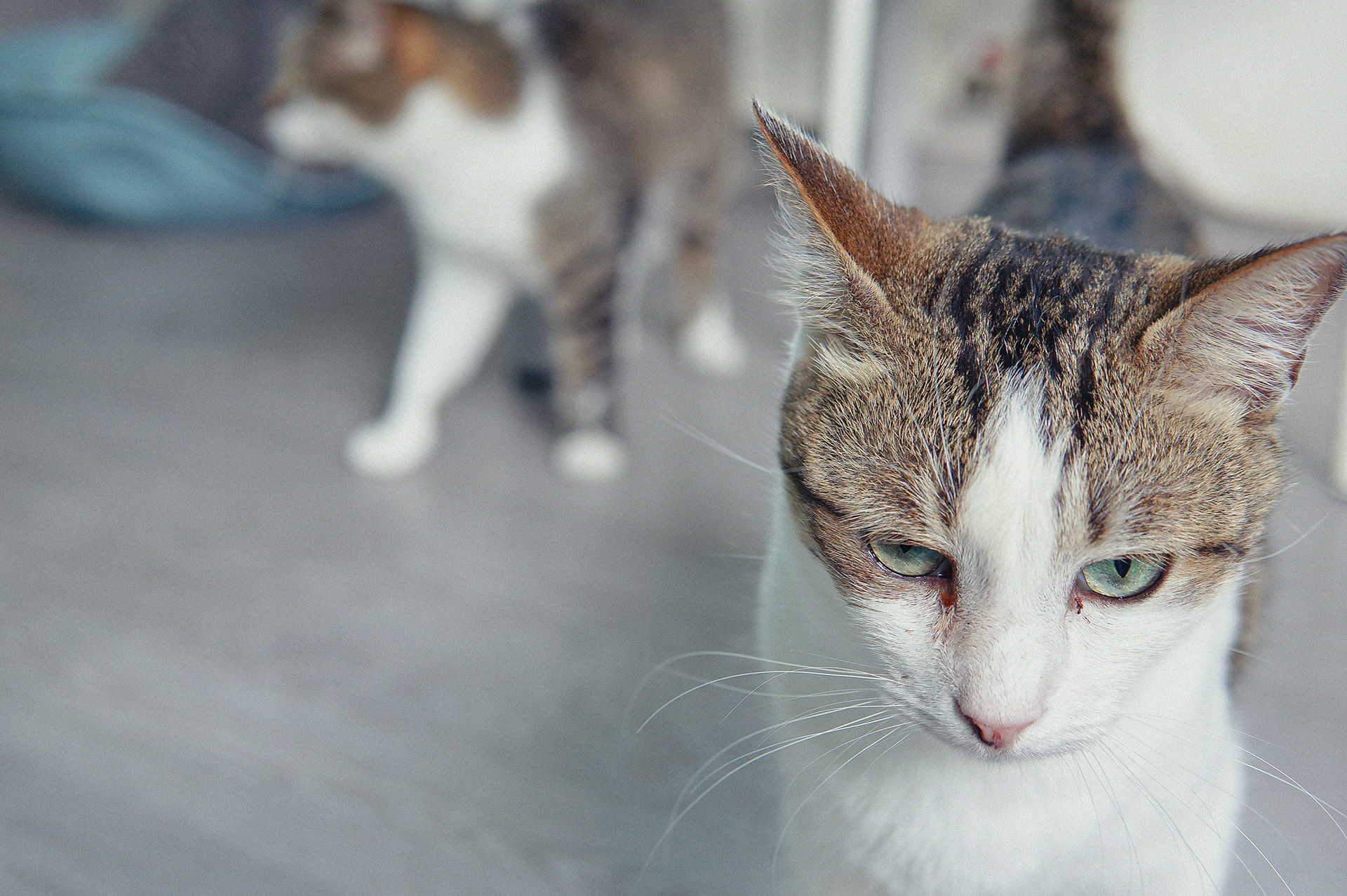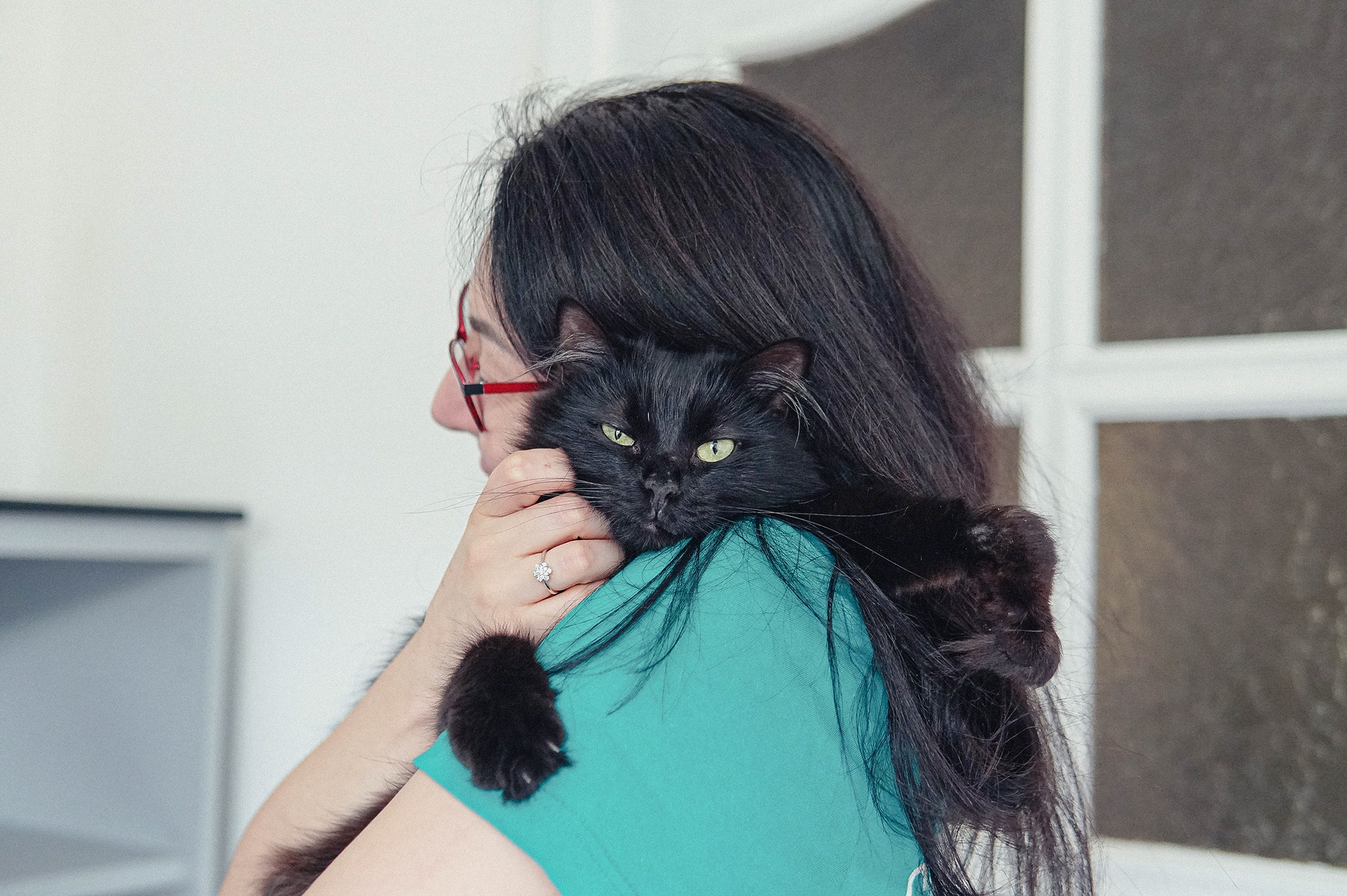War Animapolis
Hundreds of thousands of animals suffered as a result of Russia's war against Ukraine. When the full-scale invasion began, many of them were living on farms, in shelters, or on the streets. The threat was waiting for them from everywhere: from the Russians, who were destroying their homes, and the owners, who, in a hurry to evacuate, left their pets to fend for themselves. About 10 million animals lost their lives as a result of the war. According to the founder of UAnimals Oleksandr Todorchuk, more than 80 species of animals in our country are on the verge of extinction and may completely cease to exist due to Russian aggression.
The pressure on the nervous system that war causes animals does not pass without a trace. If the animal is lucky enough to survive, its psyche will still suffer serious damage. The nervous system of animals is difficult to adapt to the sounds of explosions, moving, and the panic they feel from their owners. Without the usual mental balance, they can show destructive behavior. Animals rescued from war zones need behavioral and mental health care.
Since the beginning of the full-scale invasion, I have sheltered two decorative rats that their owners left in a box near the door when they evacuated, and I also took in a puppy that got to Kyiv from the war zone. I was inspired by their stories, so I decided to visit shelters with relocated animals in different parts of Ukraine and record the changes in the lives of animals affected by the war.
The project was supported by Ukrainian Warchive.
Domivka shelter in Lviv
Domivka opened up before the full-scale war. They received animals from fur farms, breeding stations, simply found by people in various states (injured, small, etc.) not only from Lviv, but also from other cities of Ukraine.
With the beginning of a full-scale invasion, Domivka started rescuing dogs and cats. In total, over 8,000 animals passed through the center during the two years of the full-scale war. All of them came from different parts of the country. Some were brought by the military, some were evacuated by the team on their own. After the explosion of the Kakhovka Dam, Domivka saved 96 cats and 72 dogs. After the request for help, 171 animals were evacuated from the Zaporizhzhia Children's Railway.
Currently, the center cares of about 1,500 different animals. In spring of 2022, due to lack of space, a decision was made to build another location. At the moment, more than 250 animals live there, but the location is closed to visitors, because the construction is still ongoing.
The shelter lacks funds. A significant part of the money is needed for the maintenance of the center is precisely the donation of caring people, but every time it is more and more difficult to make the ends meet. The possible way to help is to purchase various things, including construction materials.
Sea Eagle Halya
Sea eagle Halya worked most of her life against her will. She was used in photo services for commercial purposes. With the beginning of the full-scale war, she was evacuated to Domivka. Her way to the shelter took 4 days — she traveled from Kharkiv to Lviv by evacuation train. When the train arrived in Lviv, it dropped people off and they didn't physically have time to pick her up, so she went back to Kharkiv and only then back to Lviv. She underwent treatment after being held in poor conditions and is now feeling much better.

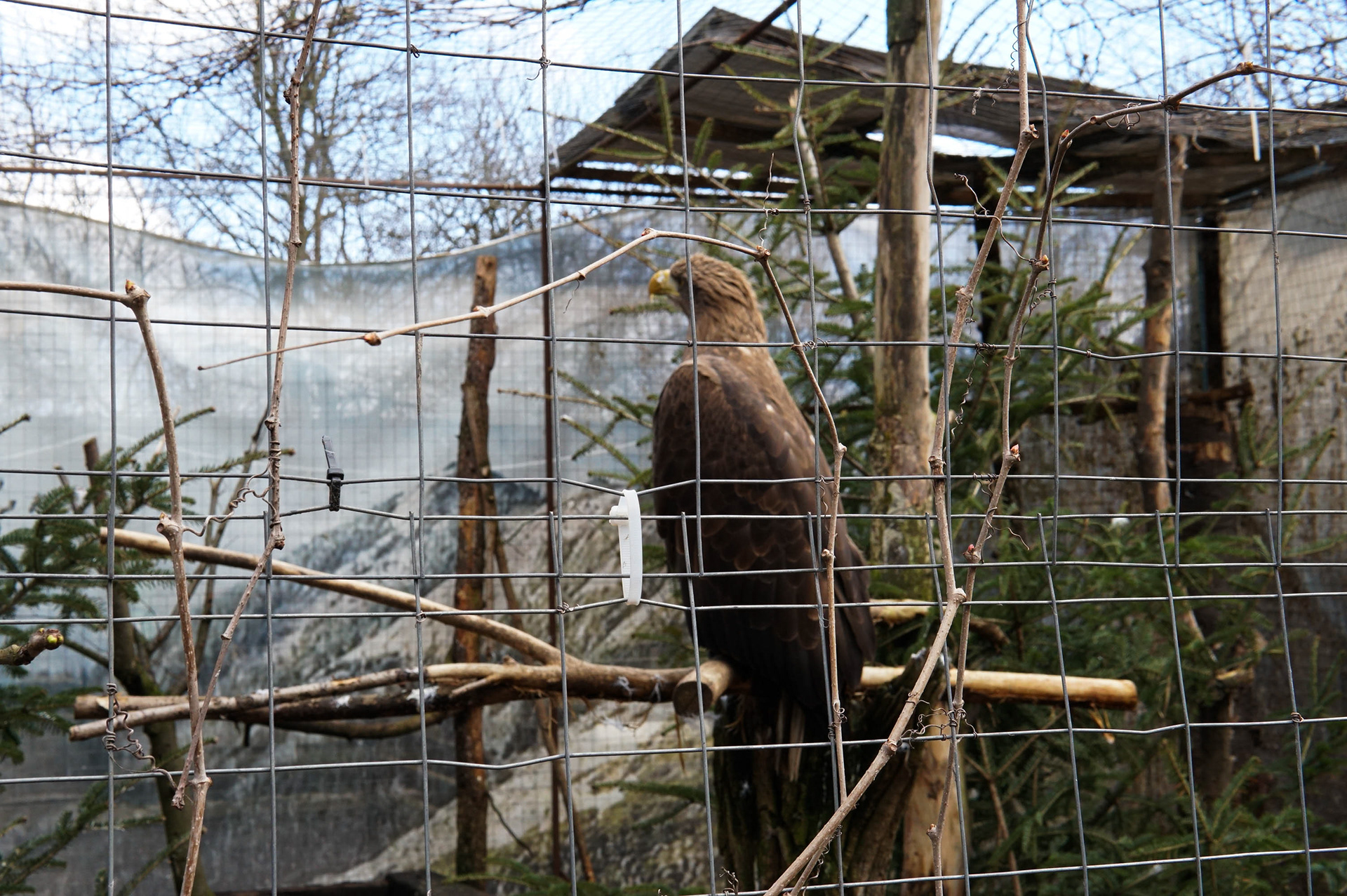
Dog Bonnie
After the deoccupation of Kherson, the team of the shelter immediately went to the liberated territories with humanitarian aid. There were many animals in the place that needed help, Bonnie was one of them. He was most likely hit by a car, because he could not walk.
He was found by a caring woman who had a lot of animals under her care, but was unable to take him as well. When the shelter team saw him, they brought him to Lviv. Here on the spot, after many consultations with various veterinarians who did not give him a chance to regain his gait, it was discovered that he had a crushed pelvis and a dislocation of the lumbar vertebrae.
Pelvic bones were collected into a pile and fixed with Ilizarov's apparatus. Due to the displacement of the vertebrae, a hernia formed in him, which compressed the spinal cord. In order to get rid of that pressure, his vertebrae were "spread" with the help of metal pins.
After several operations, long-term physiotherapy was waiting for him. Soon he was able to walk, first with support, and then independently. Bonnie walks on all four paws, but one of them has a special orthotic boot that fixes the toes in the correct position, because the sensitivity in them never returned.
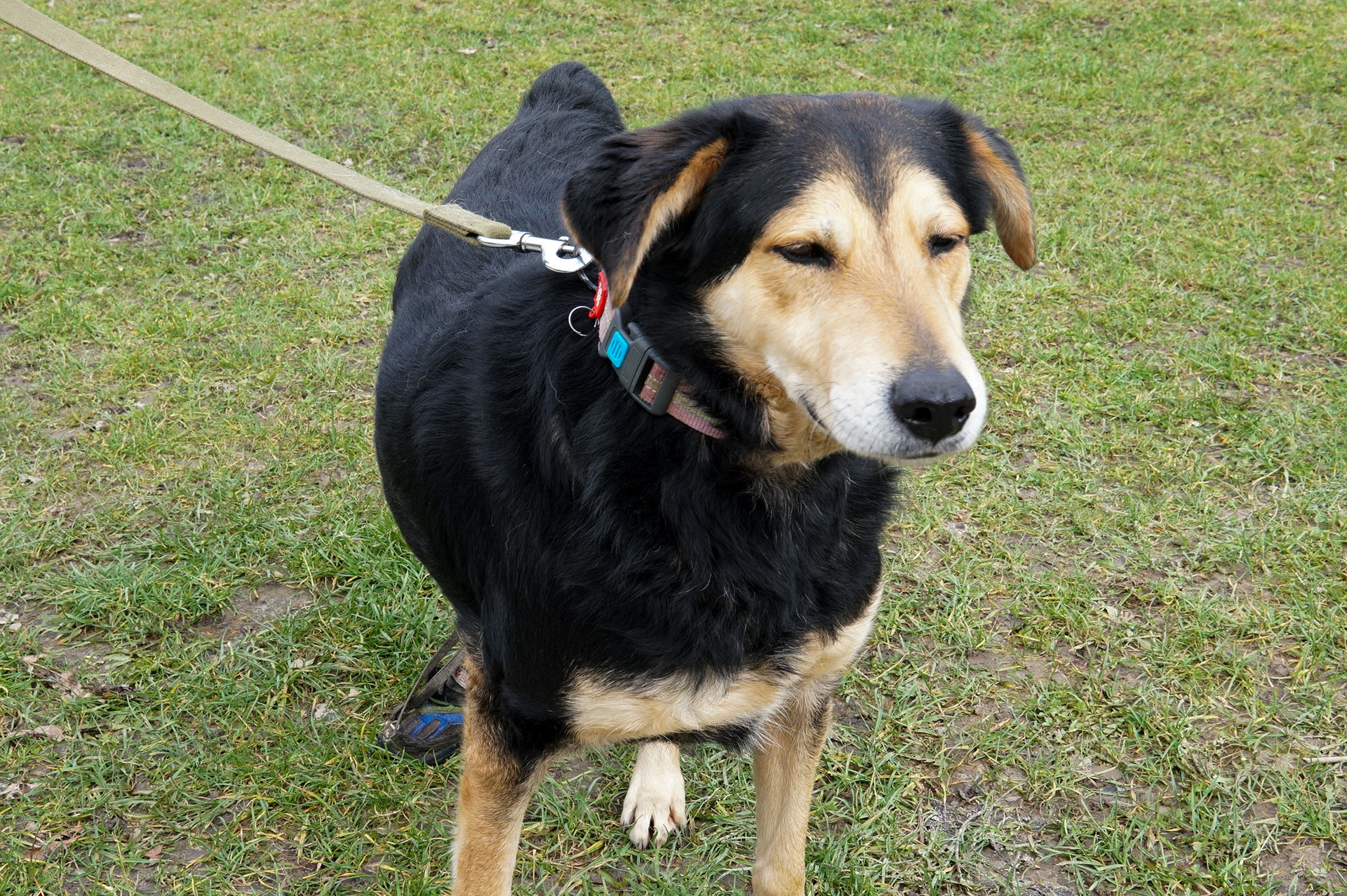
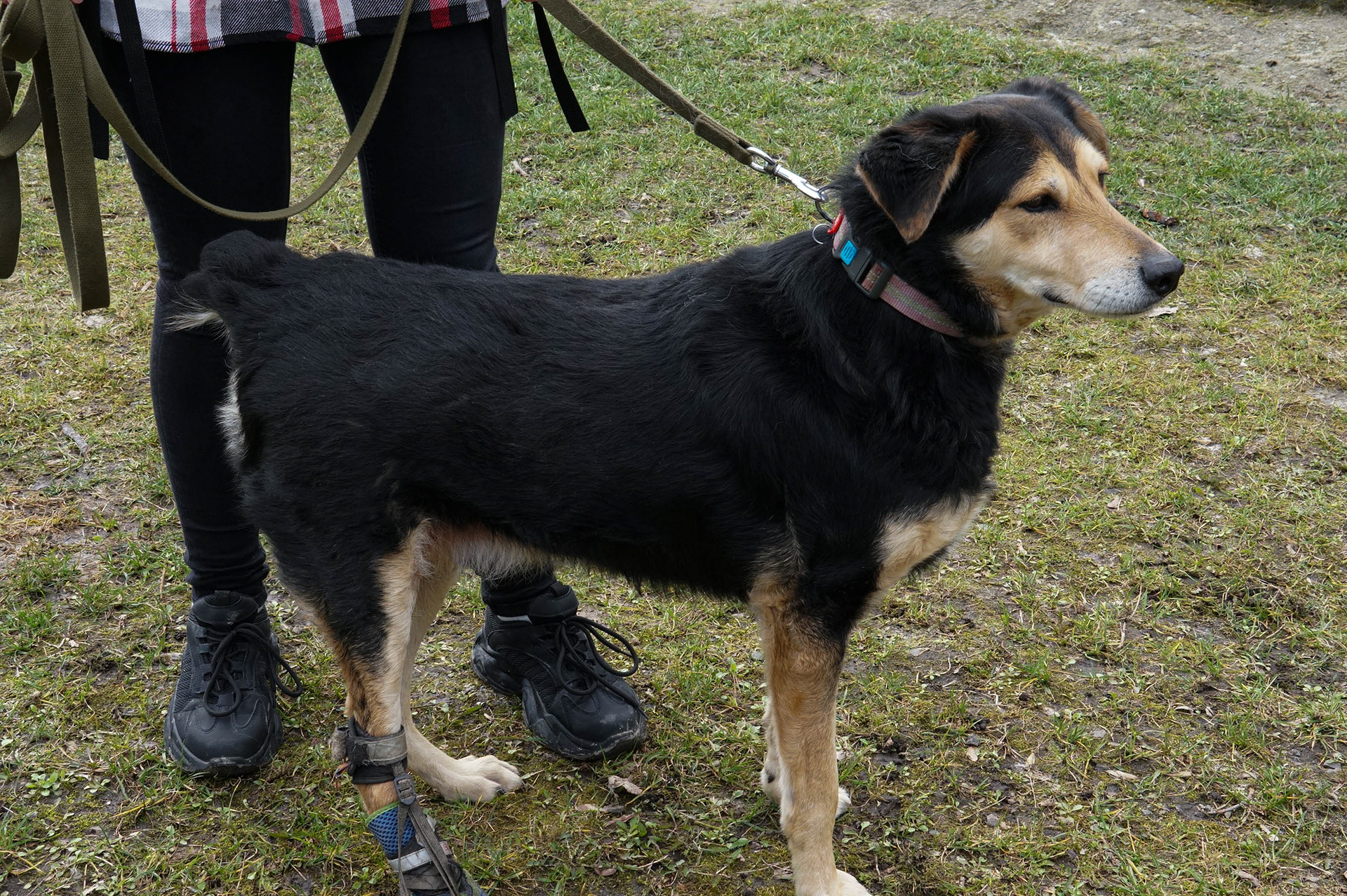
Dog Cooper
Cooper came from Kharkiv at the beginning of the full-scale war with other dogs. He kept aloof and did not let anyone near him. Thin, he could barely move his legs. Volunteers from Kharkiv saw Cooper on the street. Out of fear, he hid under the balcony of a bombed-out house, trembling and piteously whimpering.
One of the girls took the dog to her home for a few days. Then he and other dogs were sent to Lviv. This move became a stress for him, after which he had a hard time leaving. He has been aggressive towards people and dogs for a long time. Later, he started hanging out with the girls who came to the shelter and became kinder.
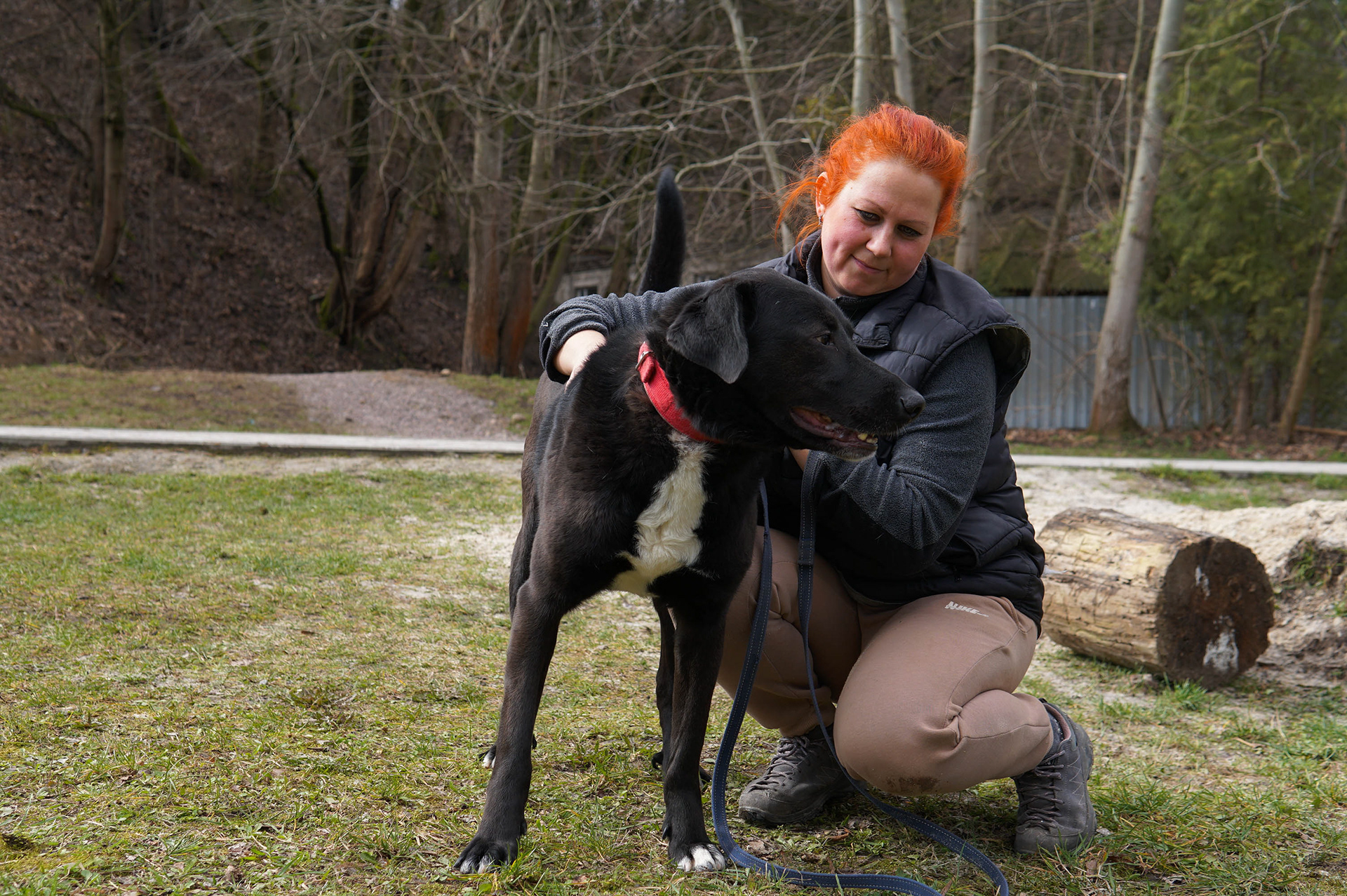
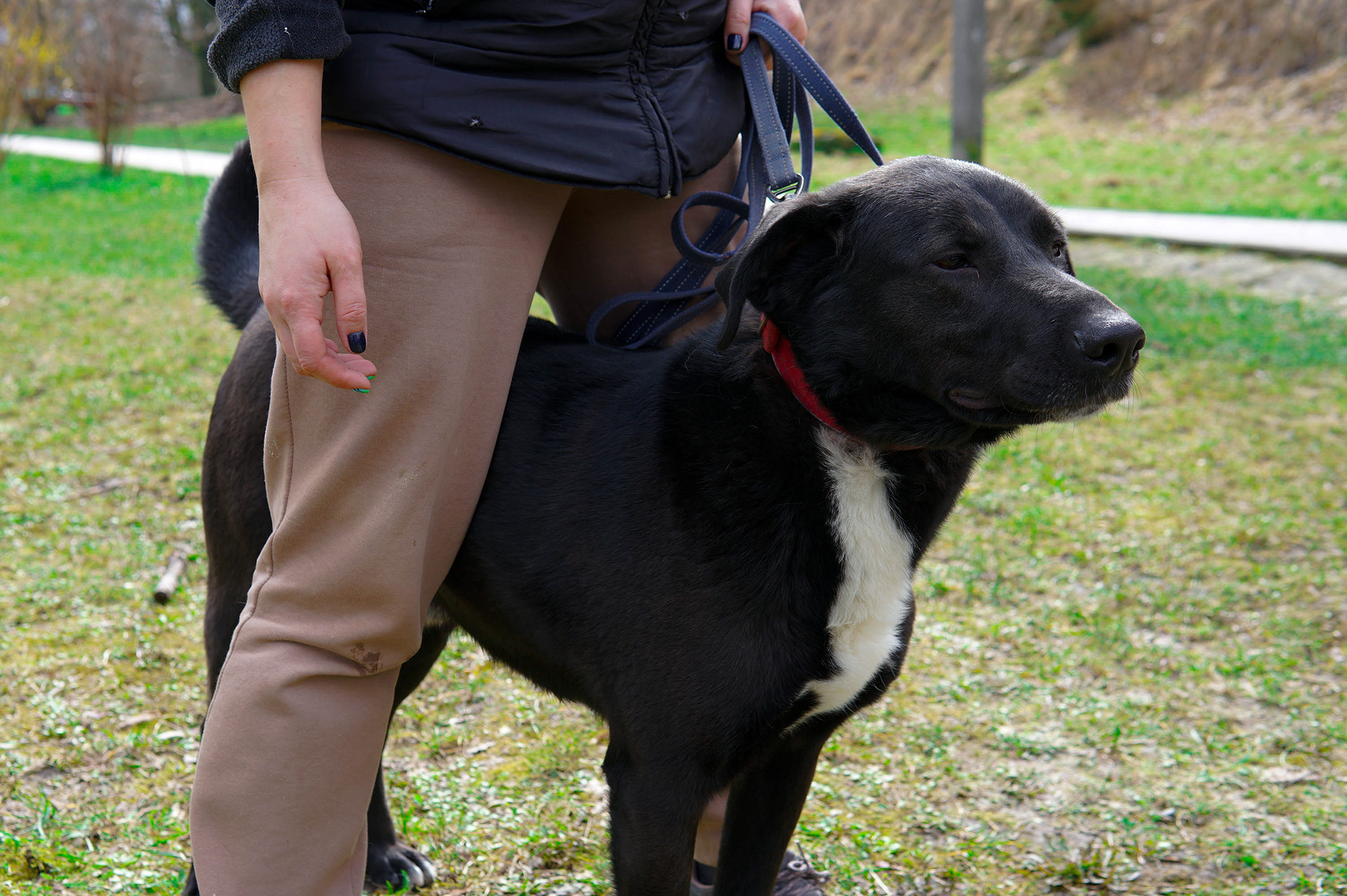
Rescued animals of Olesia Kulyk
I met animal rescuer and volunteer Olesia Kulyk in Zaporizhzhia. She invited me to release some of the animals in wild nature after treating them. We met near "Best" wet clinic and dived into the forest to set free a squirrel and two turtles.
Photo: Artem Baidala
Squirrel from Orikhiv
The jaw of the squirrel was broken by a concussion because of the hostilities in Orikhiv, Zaporizhzhia Oblast. She underwent rehabilitation with daily medication and restored her jaw in three weeks, but continued to take the medicine orally. After rehabilitation, the animal became wild.
"Wild animals always want to kill you and that's normal", says Olesia.
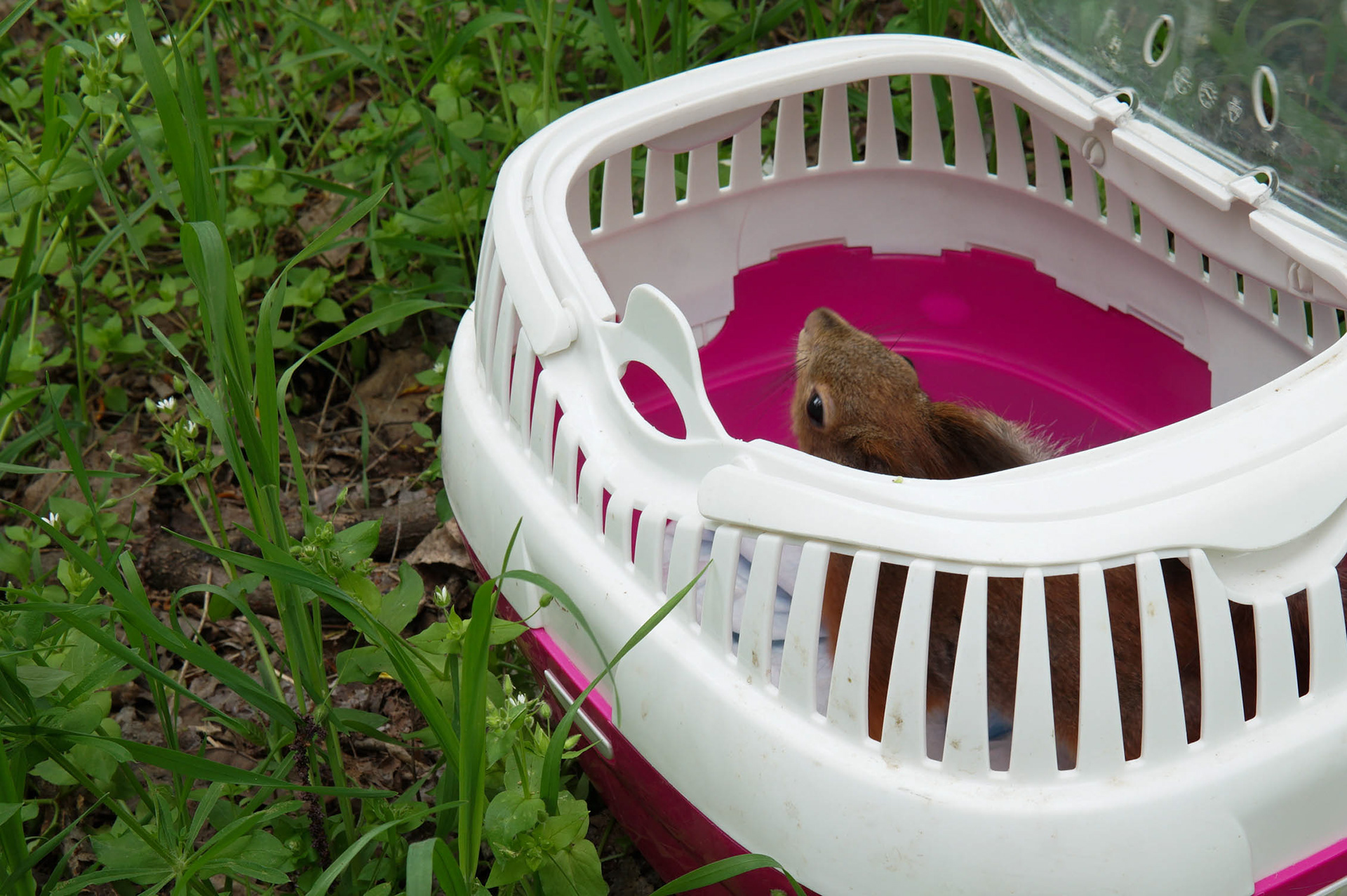

Cat Dotsia
Dotsia is one and a half years old, but she looks like a little kitty. She is very attached to Olesia, who calls her (Ukr. daughter) her "favourite detached cat". Dotsia does not care what is around and the most pleasant activity for her is to be in the hands of "mom". Her cat mom was very sick, so Dotsia got helpes, which will be with her all her life.
Dotsia came from Bakhmut, Donetsk Oblast. She fell on her legs, they came apart and all the joints in the knees and hips were twisted. Doctors did x-rays and a bunch of operations to save her — they costed almost like a drone. Operations were performed in Dnipro, because treatments of that kind are not an option in Zaporizhzhia. Some of the operation were performed twice.
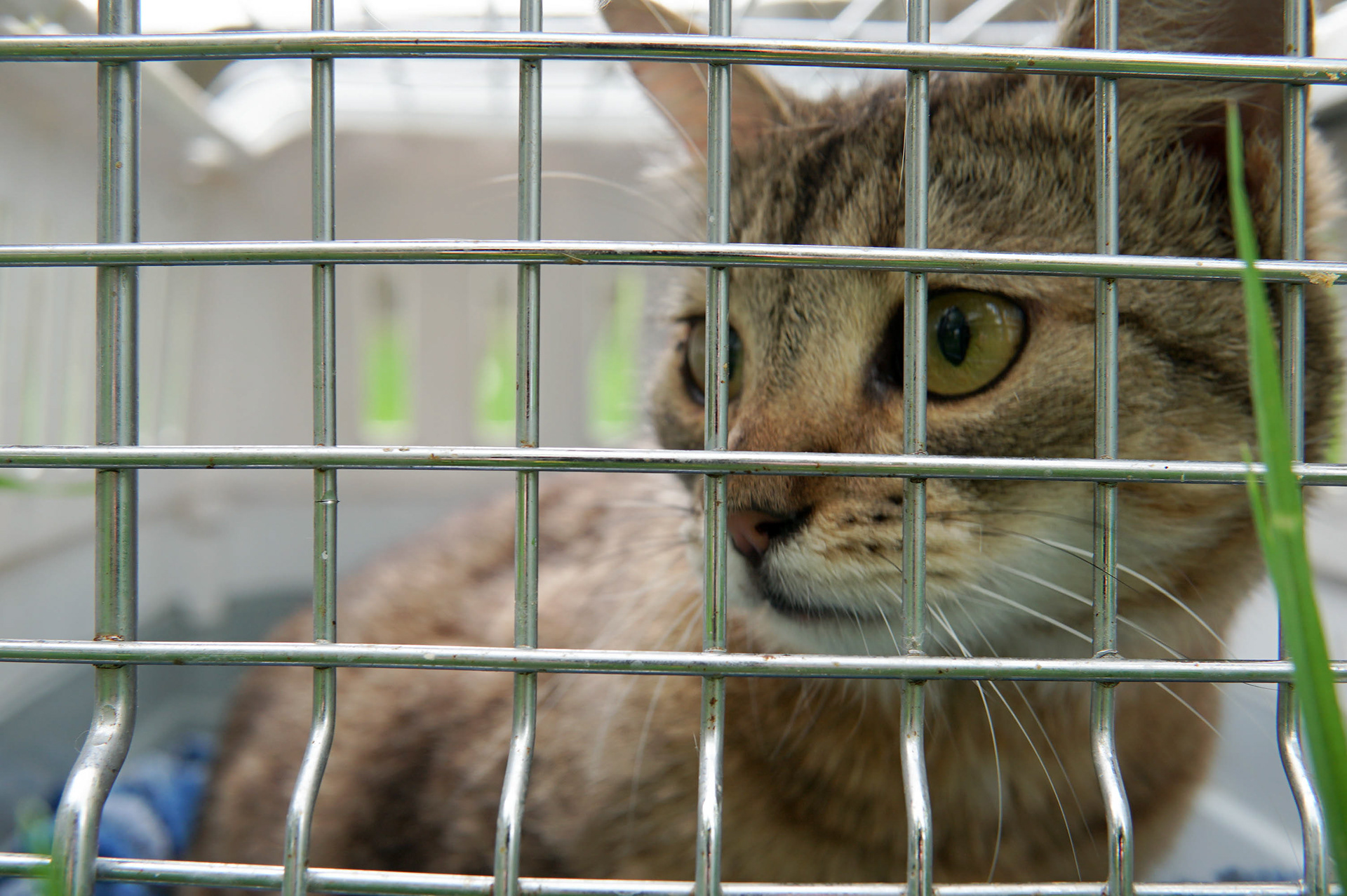

Brown Owl Drone
"She doesn't look very good — unfortunately, it's normal for him", says Olesia. Drone was saved by the military — the musician and actor rescued her from the Orikhiv direction. She has a broken wing, that was restored as much as possible. The wing was not amputated, but it will always remain flightless. The owl had a concussion, and had one yellow, and one black eye. Everything is fine with her now, except that she is not flying.
Drone has a couple — a boy, also not a flighty one. It is very expensive to feed them — mice cost 40 hryvnias each and are not for sale in Zaporizhzhia, so Olesia orders them online. They are in short supply, so you get as much as you can, even if you have . The whole apartment is covered in mouse corpses and leftover food.
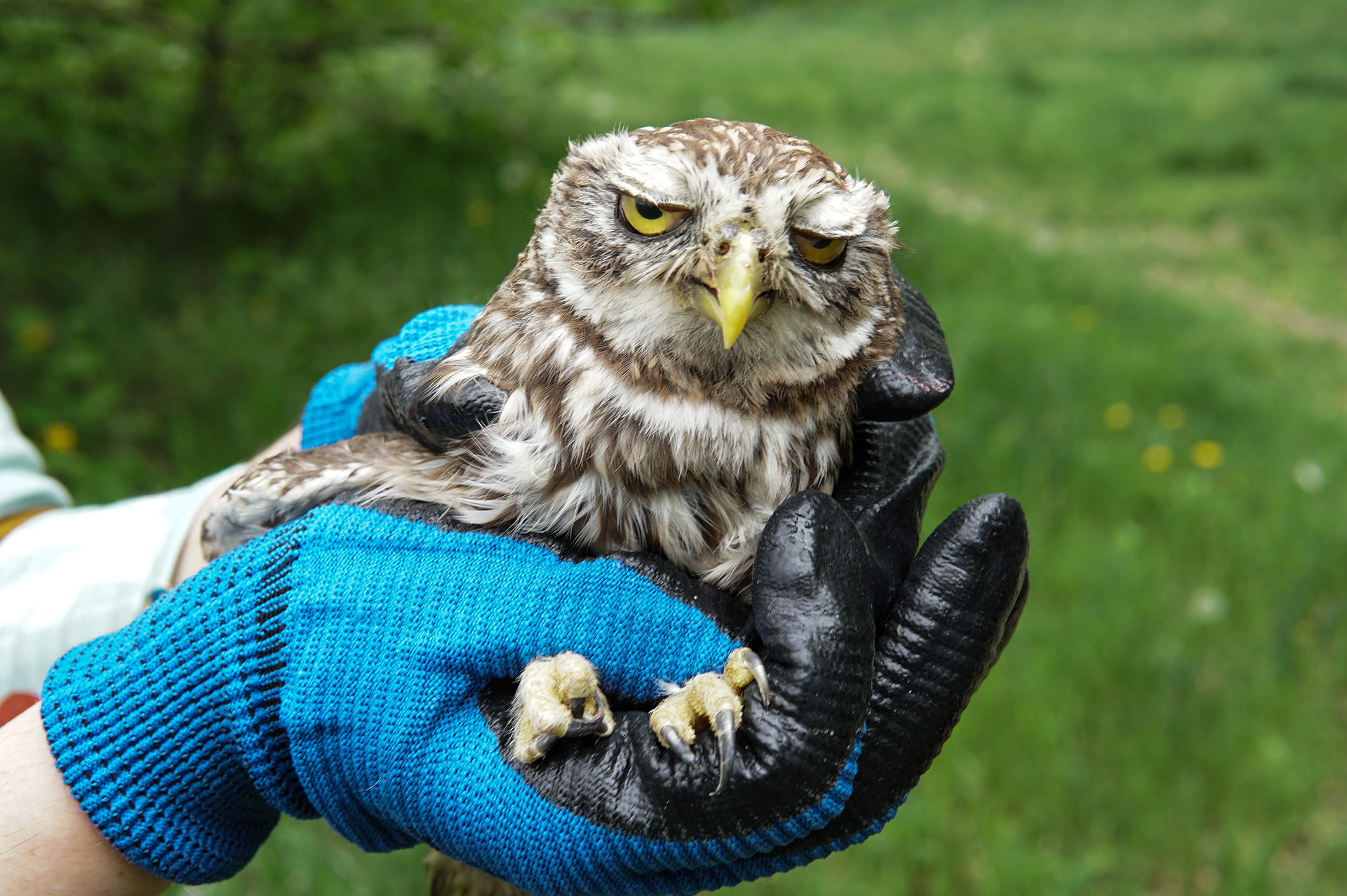
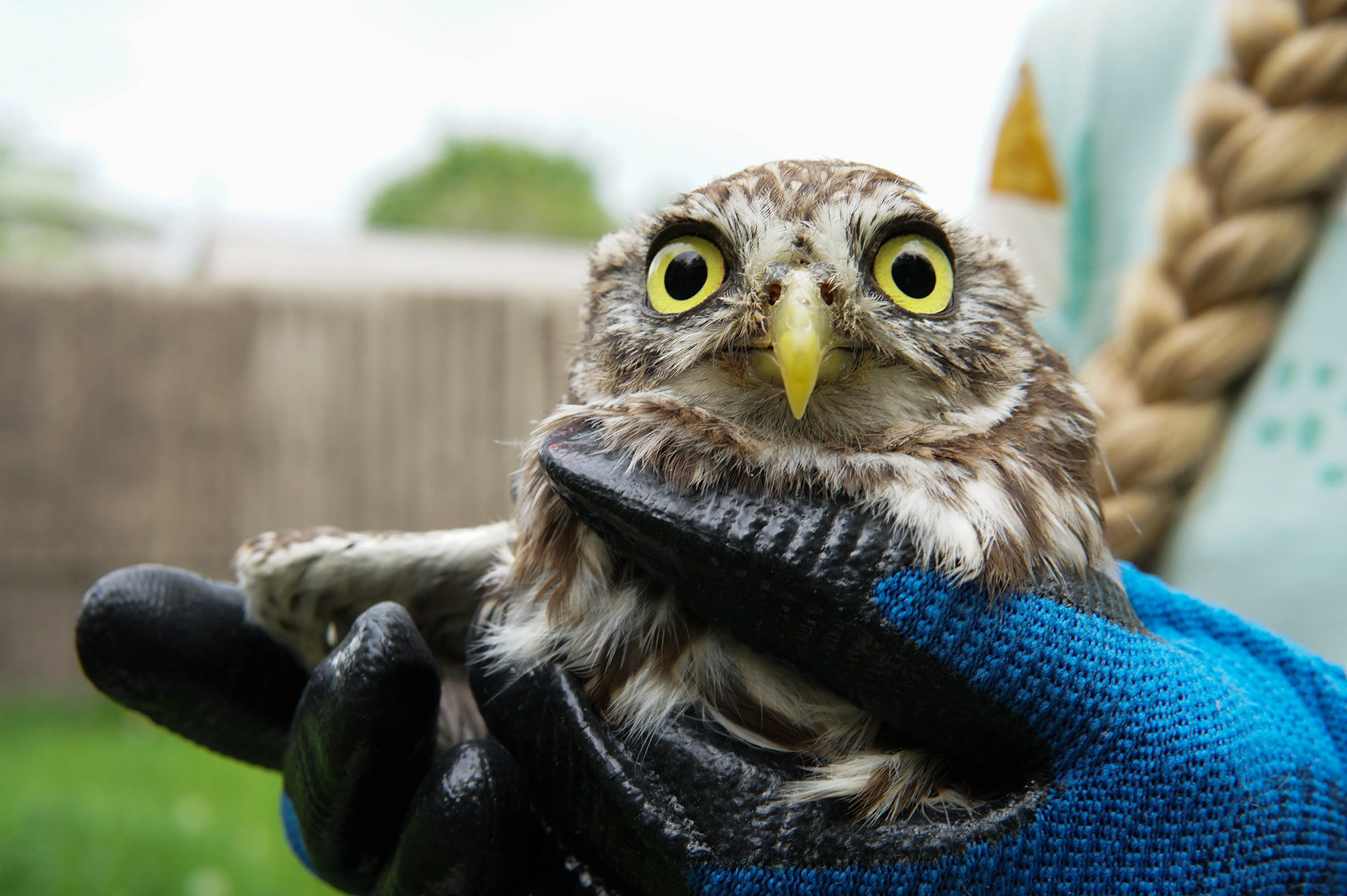
Feldman Ecopark
The territory of Feldman Ecopark in Kharkiv is significantly damaged as a result of a full-scale invasion — only 5% of the enclosures are suitable for use. The evacuation from the social and humanitarian multi-complex took place in 2022 under fire. Overall, 300 animals lost their lives during evacuation, and also several employees. After the retreat of the Russians, the Ecopark was demined and the enclosures are still being restored. Though damaged, the Ecopark holds events for children at weekends.
Feldman Ecopark. (2024, April 1). "Peaceful skies overhead" [Sign]. Kharkiv, Ukraine.
After the enclosures were damaged in the first weeks of the full-scale war, ungulates escaped and resided in the forests nearby. They came back by themselves when their homes got rebuilt.
All animals of the Ecopark were relocated during evacuation. Some of them some of them were sheltered by the Kharkiv Zoo, and some were in Kovalivka, Poltava Oblast. Not all animals came back — there is simply no place for them in the park yet.
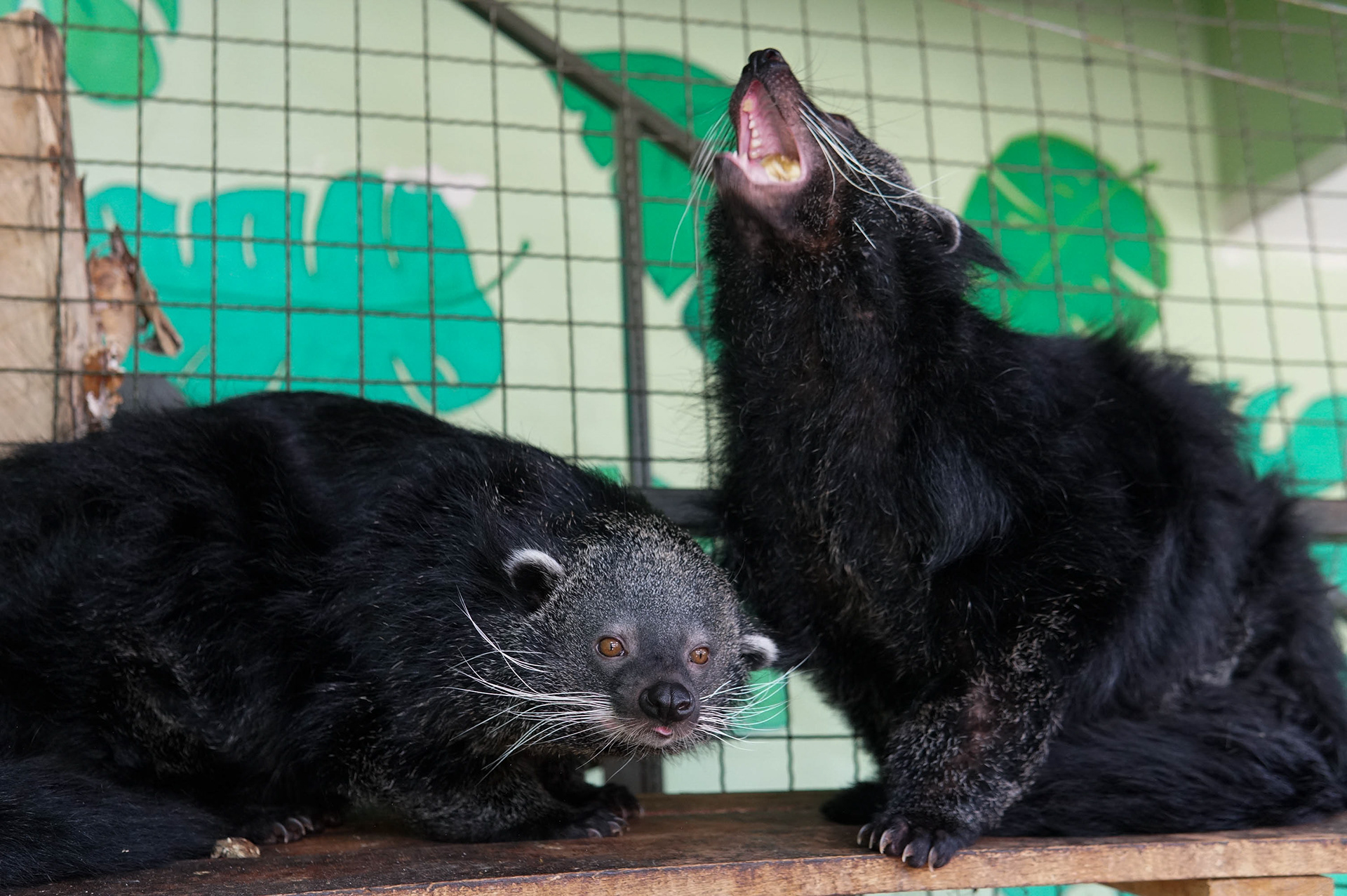
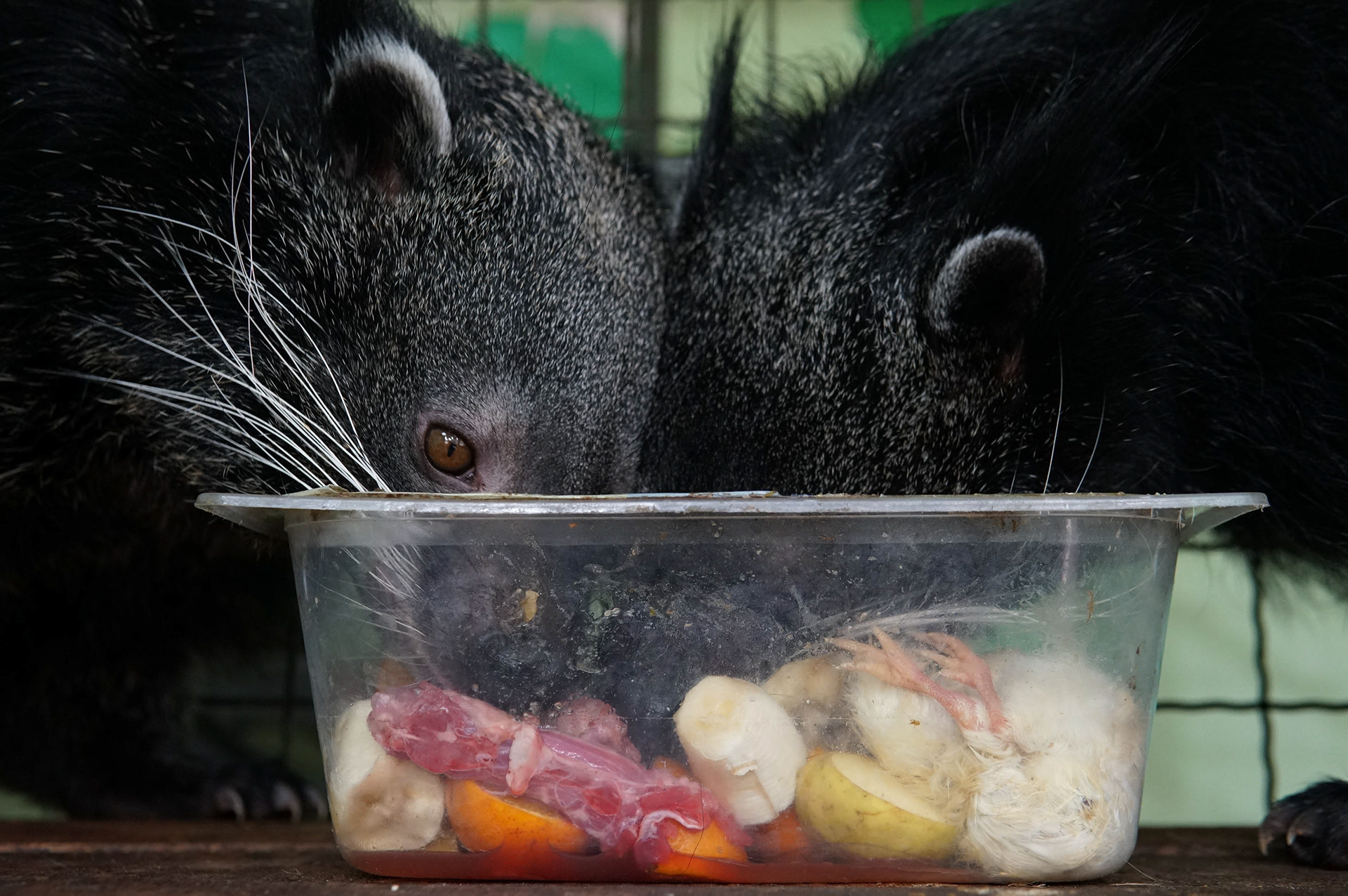

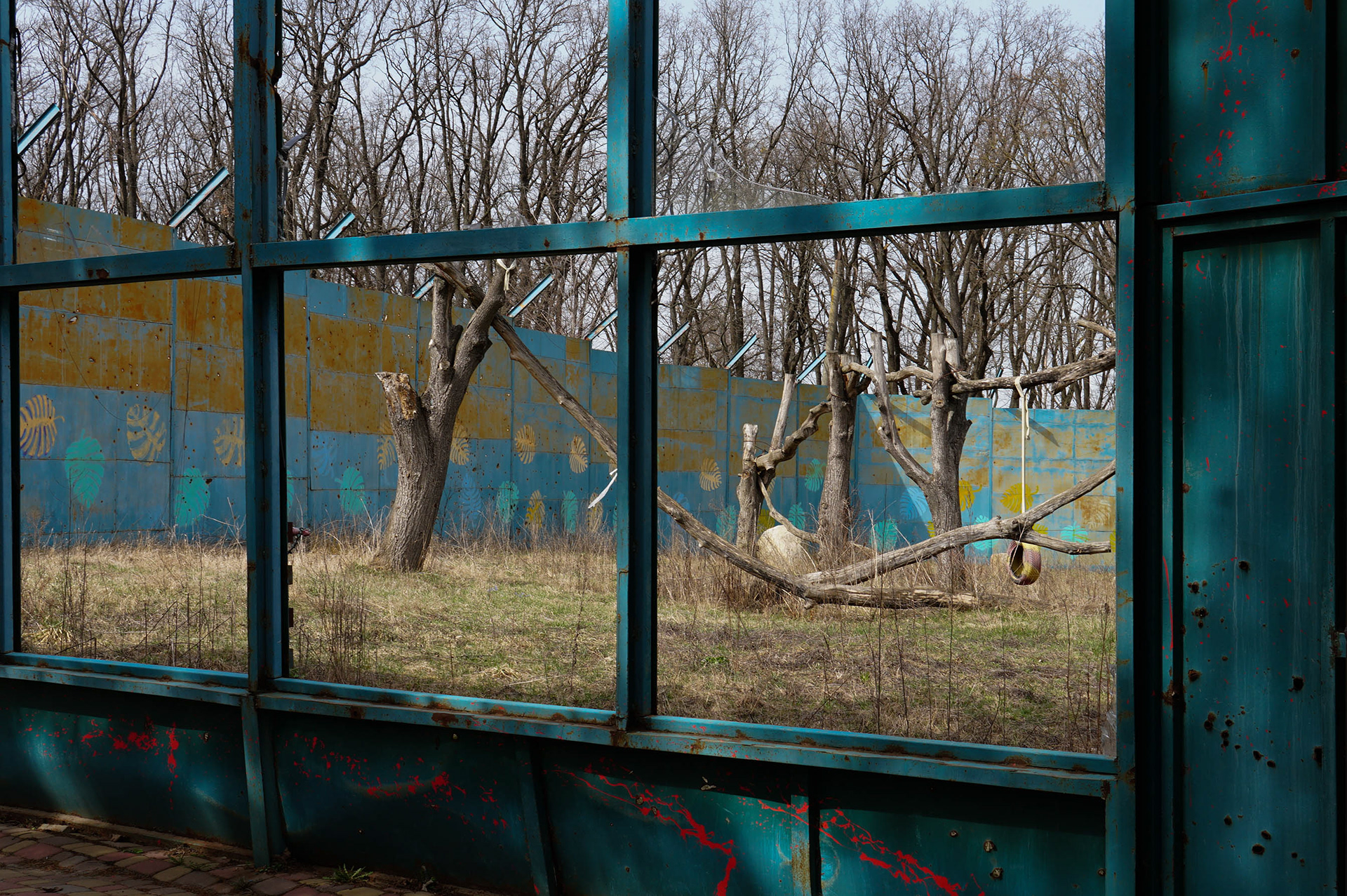
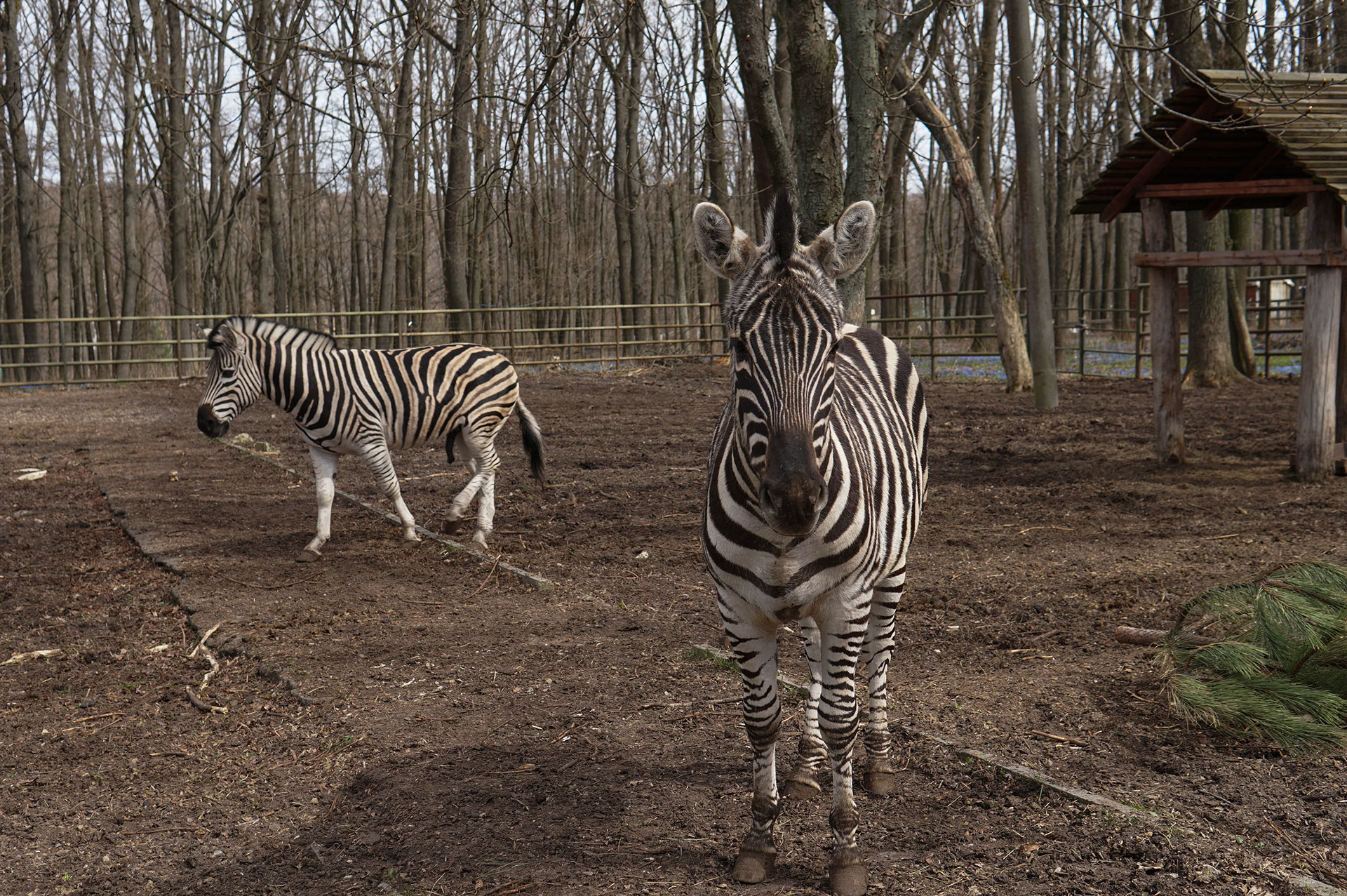
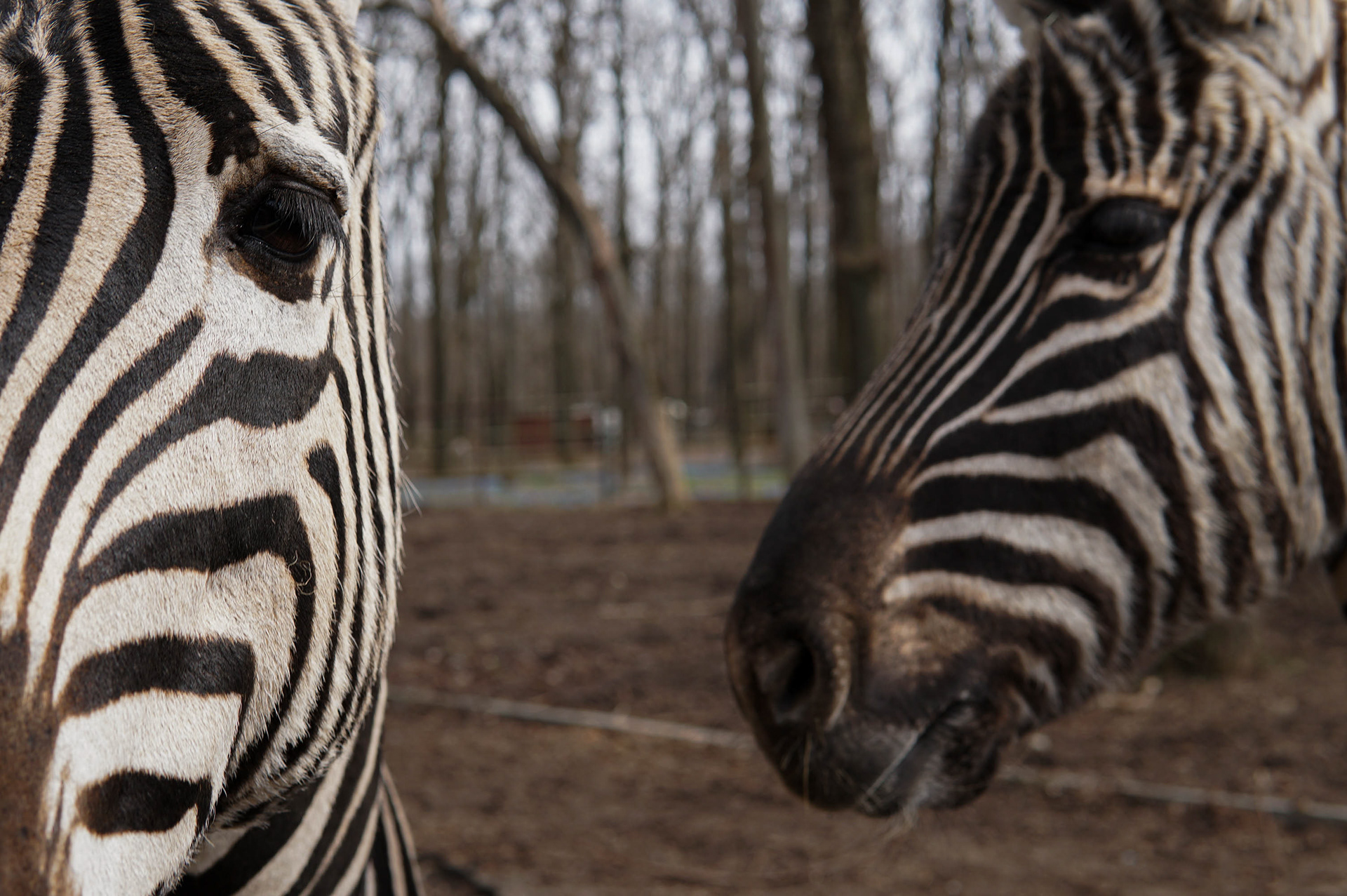
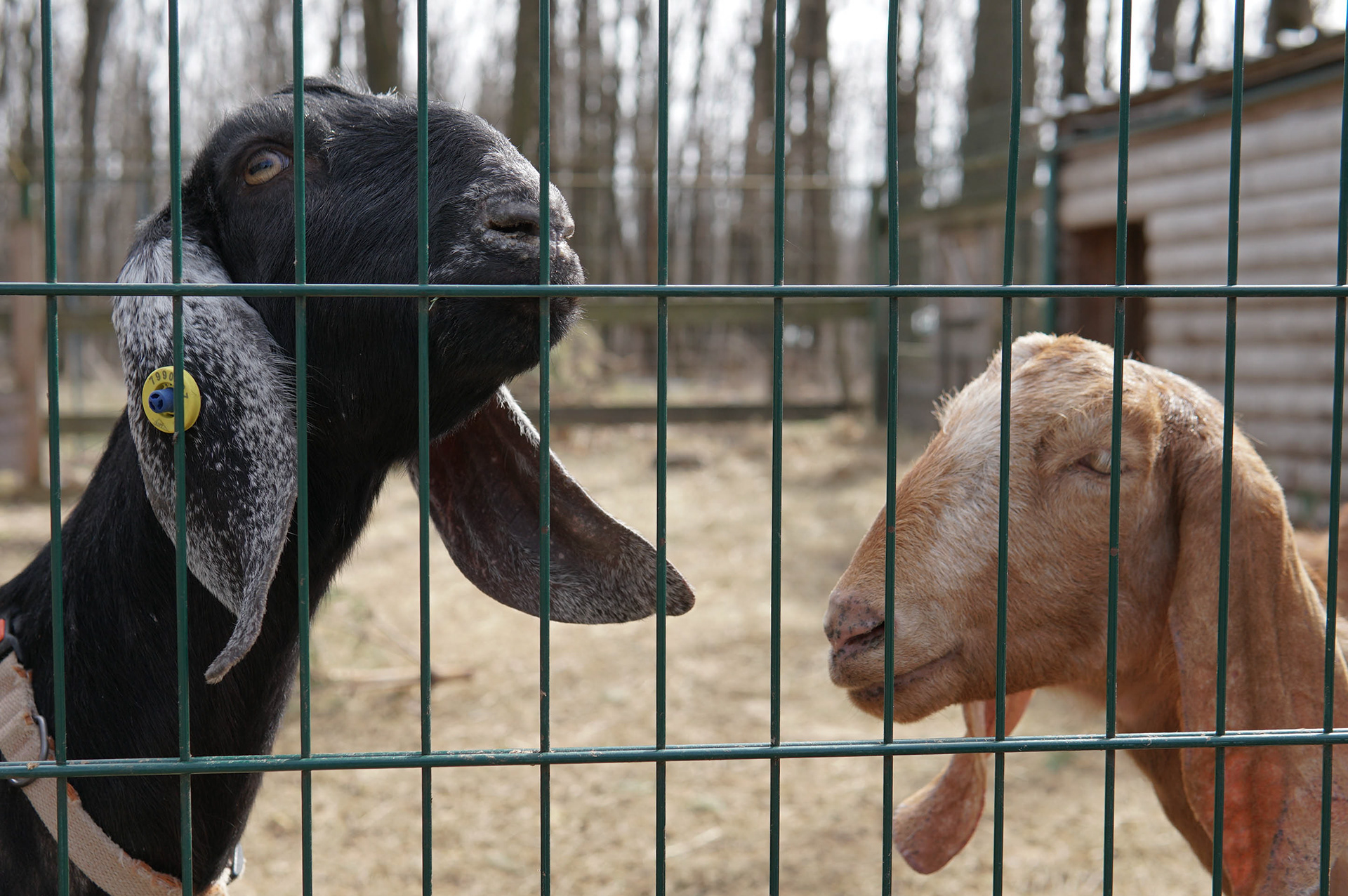
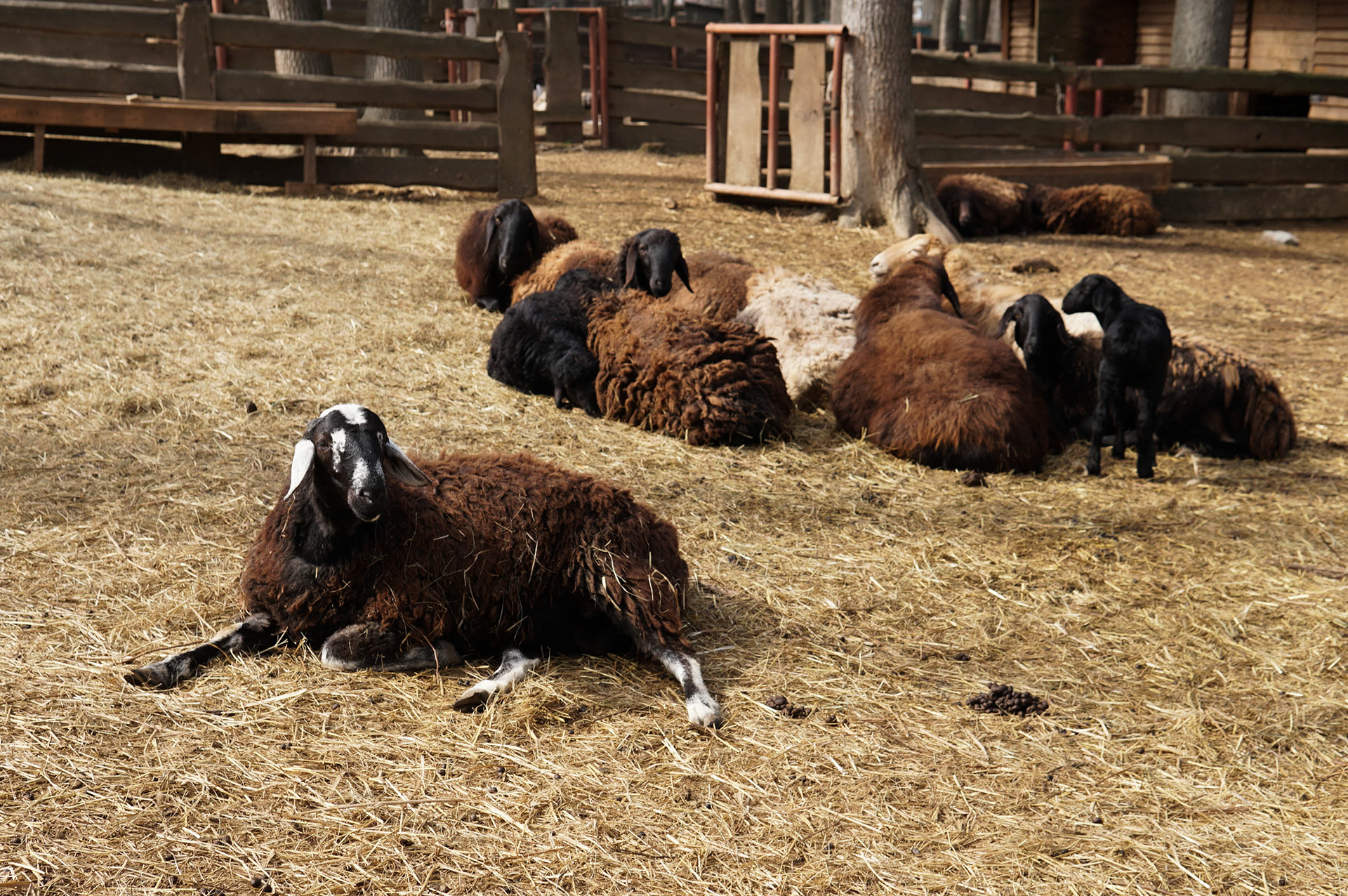
ShasSpasu
The ShasSpasu animal shelter, located in the Kyiv region, is a privately-run sanctuary dedicated to finding loving homes for cats and dogs in need. Operating with compassion and determination, the shelter provides a safe space for animals rescued from difficult circumstances, including those impacted by the ongoing war in Ukraine.
At the time of this reportage, the shelter had arranged a special room specifically for cats rescued from the Sumy region, offering them a secure environment to heal and recover. This initiative highlights ShasSpasu’s commitment to addressing the unique needs of each animal, ensuring they receive the care and attention necessary for a new beginning.
